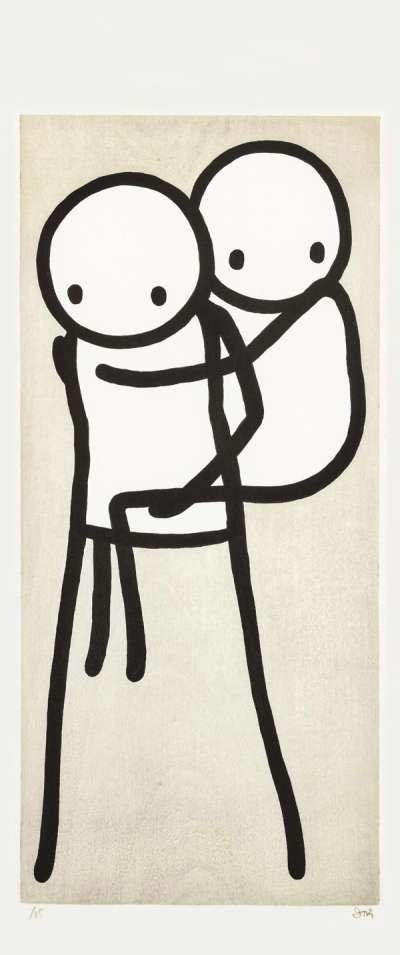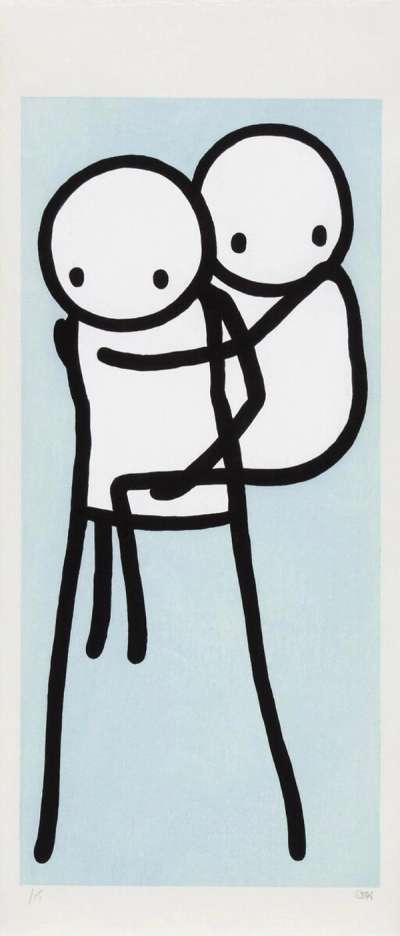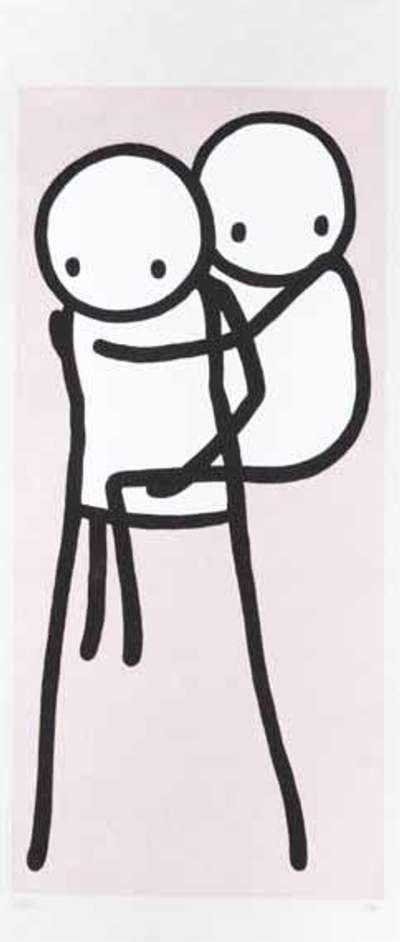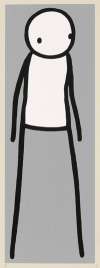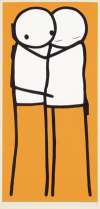Onbu
Stik's Onbu print series, produced in 2013 in collaboration with Tokyo's Adachi Institute, shows two of his classic stick figures in a piggyback. Stik recreates a detail from Utagawa Hiroshige's series of woodcut prints, “The Fifty-Three Stations of the Tokaido”, transforming Hiroshige's impressively intricate imagery with his signature simplicity.
Stik Onbu For sale
Onbu Market value
Auction Results
| Artwork | Auction Date | Auction House | Return to Seller | Hammer Price | Buyer Paid |
|---|---|---|---|---|---|
 Onbu (green) Stik Signed Print | 30 Sept 2025 | Christie's London | £16,150 | £19,000 | £25,000 |
 Onbu (grey) Stik Signed Print | 25 Jan 2025 | SBI Art Auction | £5,950 | £7,000 | £8,500 |
 Onbu (pink) Stik Signed Print | 26 Mar 2024 | Christie's London | £8,075 | £9,500 | £12,500 |
 Onbu (blue) Stik Signed Print | 26 Mar 2024 | Christie's London | £7,650 | £9,000 | £12,000 |
Sell Your Art
with Us
with Us
Join Our Network of Collectors. Buy, Sell and Track Demand
Meaning & Analysis
The Onbu print series was produced in 2013 in collaboration with Tokyo’s Adachi Institute, and depicts a piggyback in signature Stik style. Depicting a piggyback, the series was printed using traditional pigments against block tones of blue, grey, green and pink. The Japanese influence which permeates the entirety of the artist’s oeuvre is perhaps at its height in Onbu.
STIK’s six-line stickman figures were inspired by the emotive, sparing and deliberate mark-making of Kanji - a group of logographic characters with Chinese origins which plays a key role in the Japanese writing system. The artist has noted that his shorthand, emotive style of drawing was inspired by his year spent in Japan as a teenager.
In this series of prints, STIK recreates a detail from Utagawa Hiroshige’s series of woodcut prints entitled The Fifty-Three Stations of the Tokaido, which depicts the historic Tokaido road that connected shogun Japan’s capital, Edo, to Kyoto, the imperial capital. The intricate detail of Hiroshige’s prints starkly contrasts against STIK’s characteristically minimalistic interpretation of the historical scene.
STIK adhered to the processes associated with the traditional Japanese woodcut genre 0f ‘ukiyo-e’ (‘pictures of a floating world’) in creating the works, which are complementary to STIK’s typically minimalistic colour scheme. Ukiyo-e, which reached its peak of popularity in 19th century Japan, tended to depict everyday life in Japan’s major cities, with a particular focus on the ‘floating world’ of brothel and theatre districts. More affordable than the paintings of the day enjoyed by the rich, the comparatively inexpensive ukiyo-e were bought and enjoyed by a wide spectrum of the population.
The production of ukiyo-e prints involves the drawing of the design on paper, prior to its placement on a cherry wood block. The design is then carved into the block, which can be used to make initial monochromatic prints before layers of additional colour are added as required with the carving of additional blocks.
While STIK’s inspiration for the series is plain to see, the image also appears entirely at home in the artist’s catalogue, recalling other images of reliance and physical support such as Big Mother, where STIK depicts a mother carrying her young child at her side, with each figure looking vulnerably in opposite directions.
